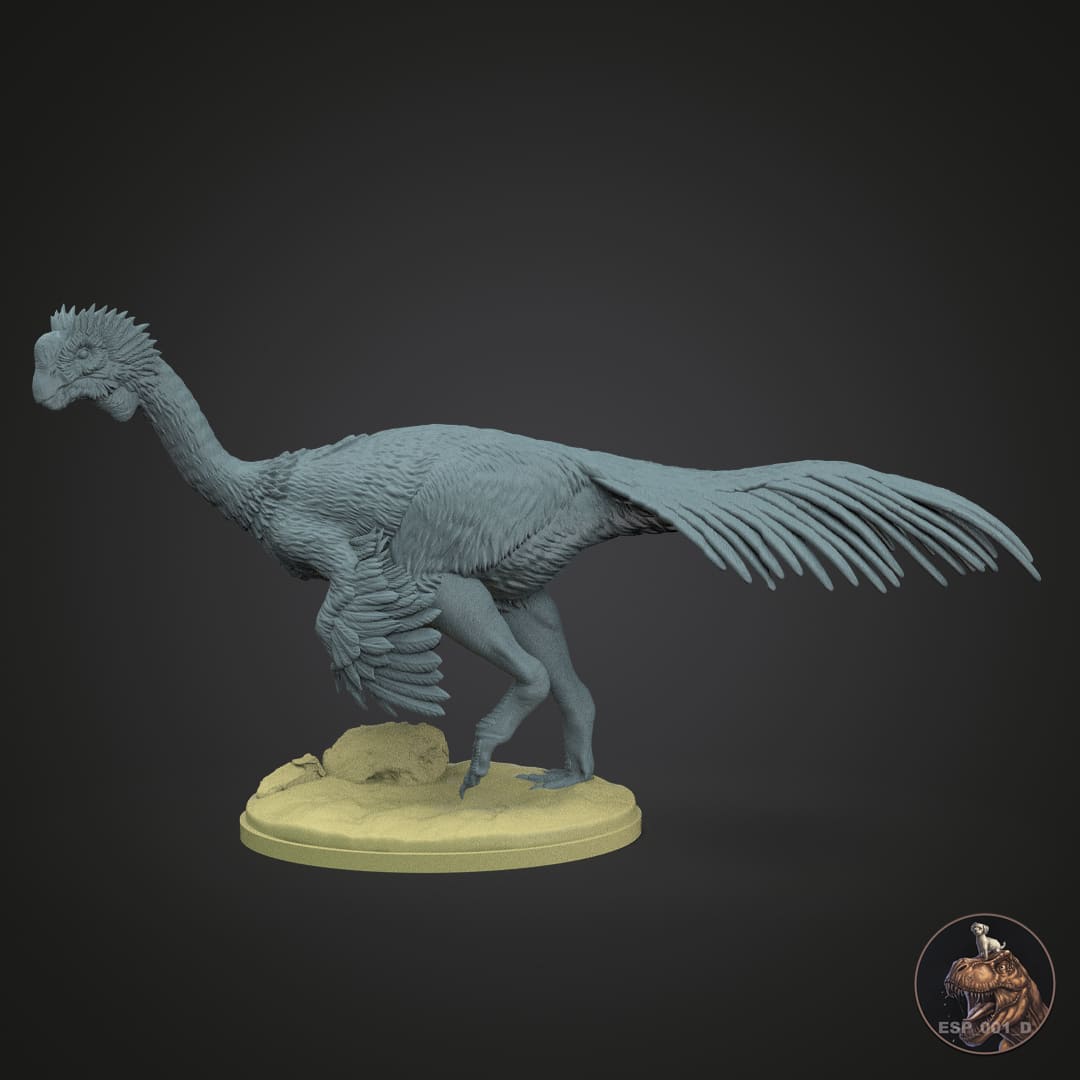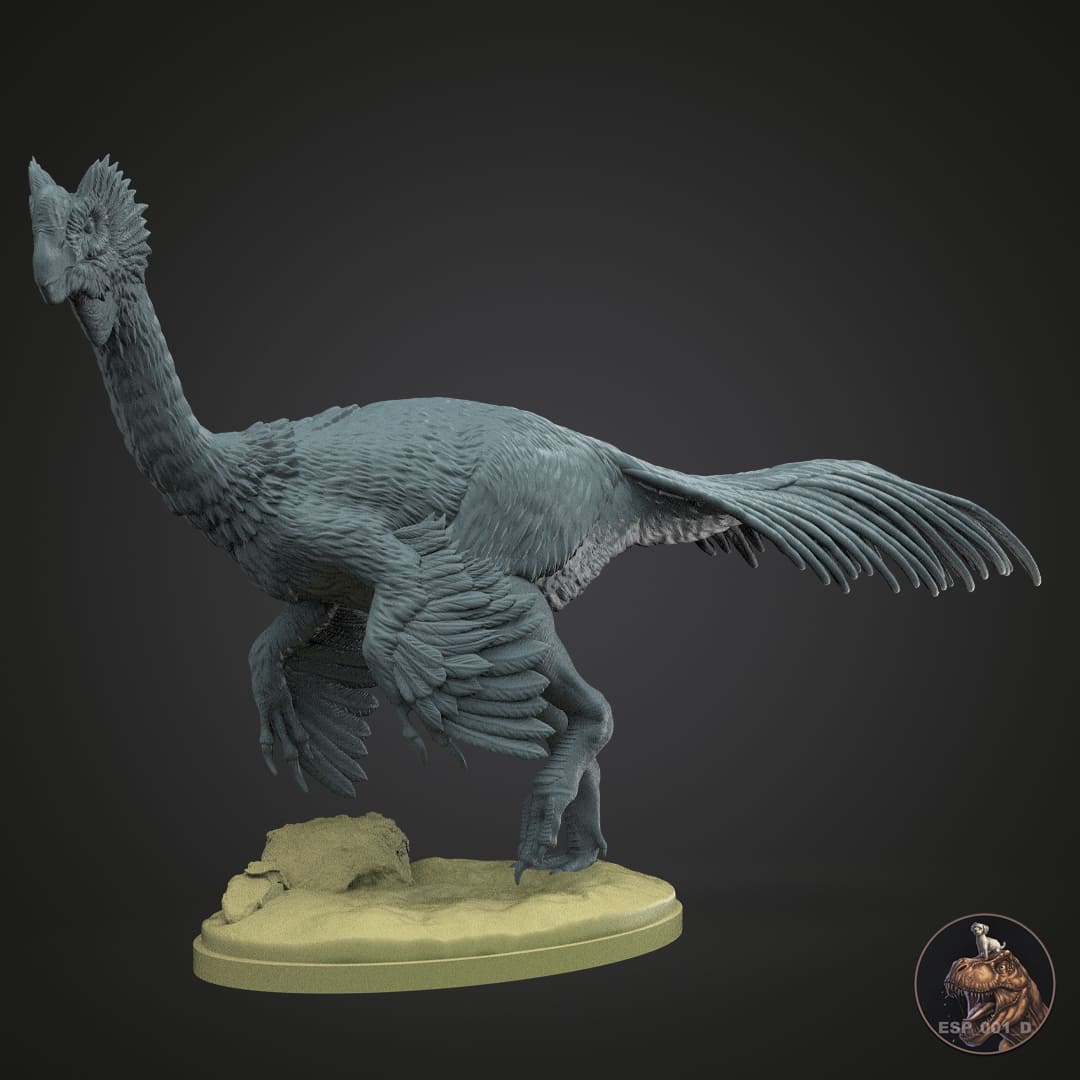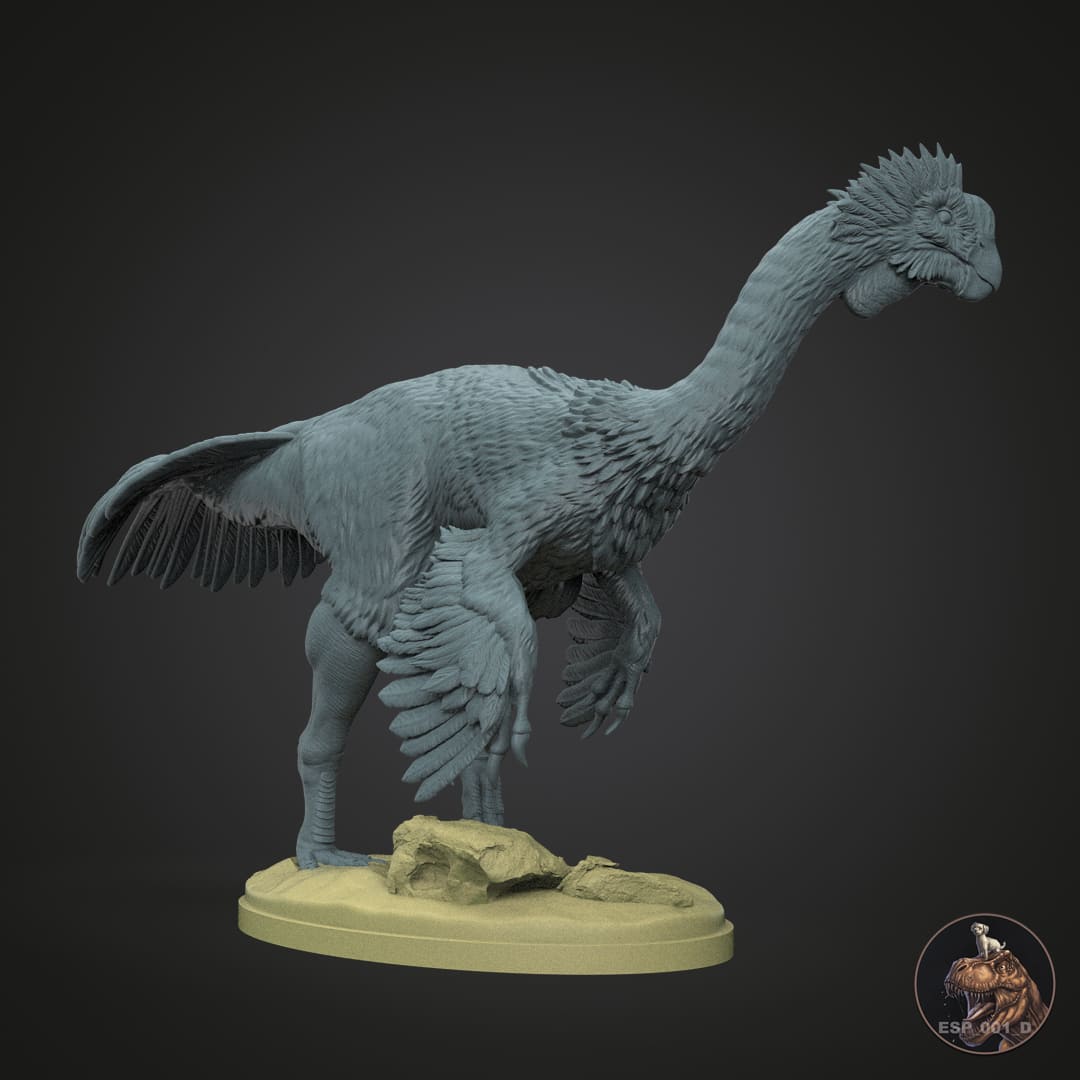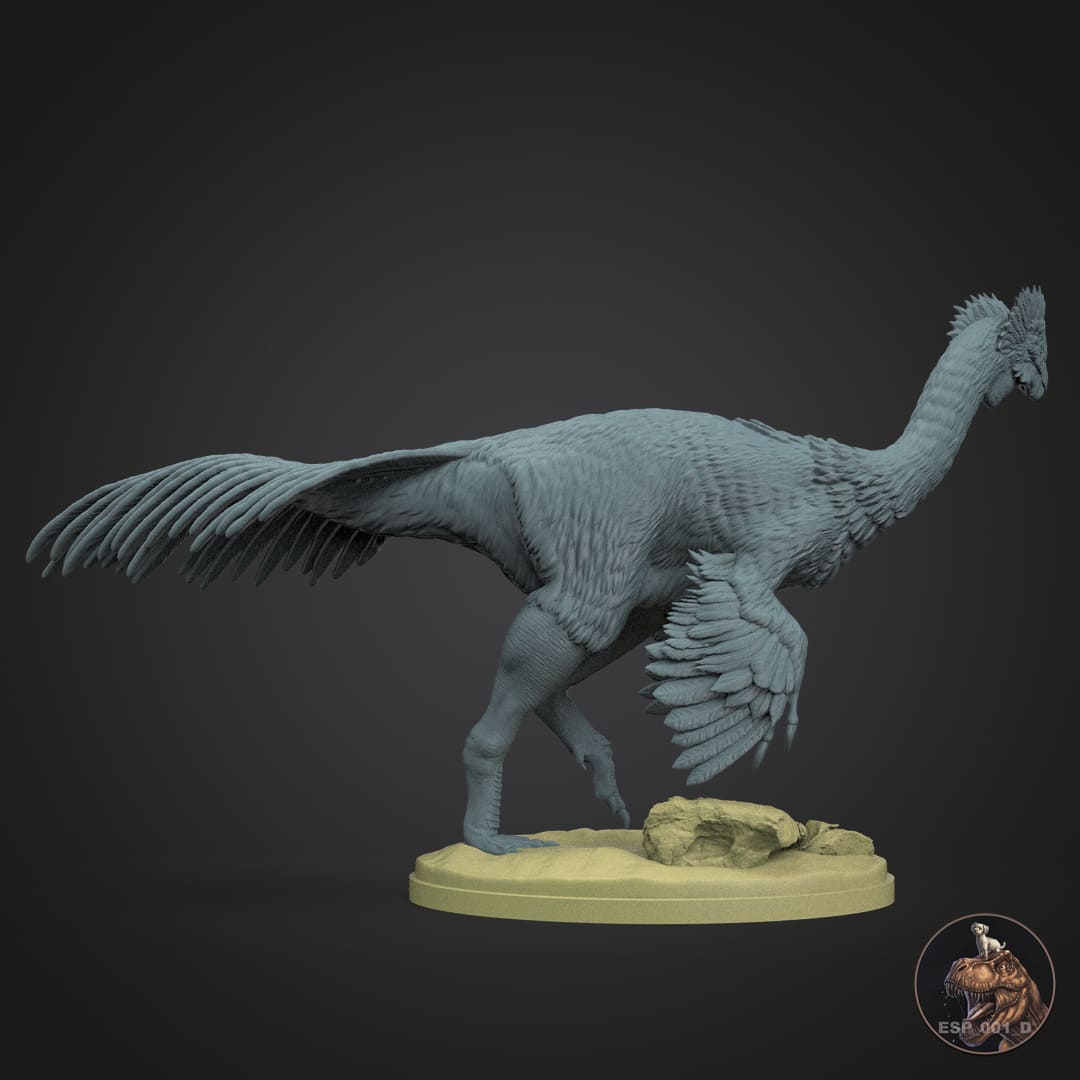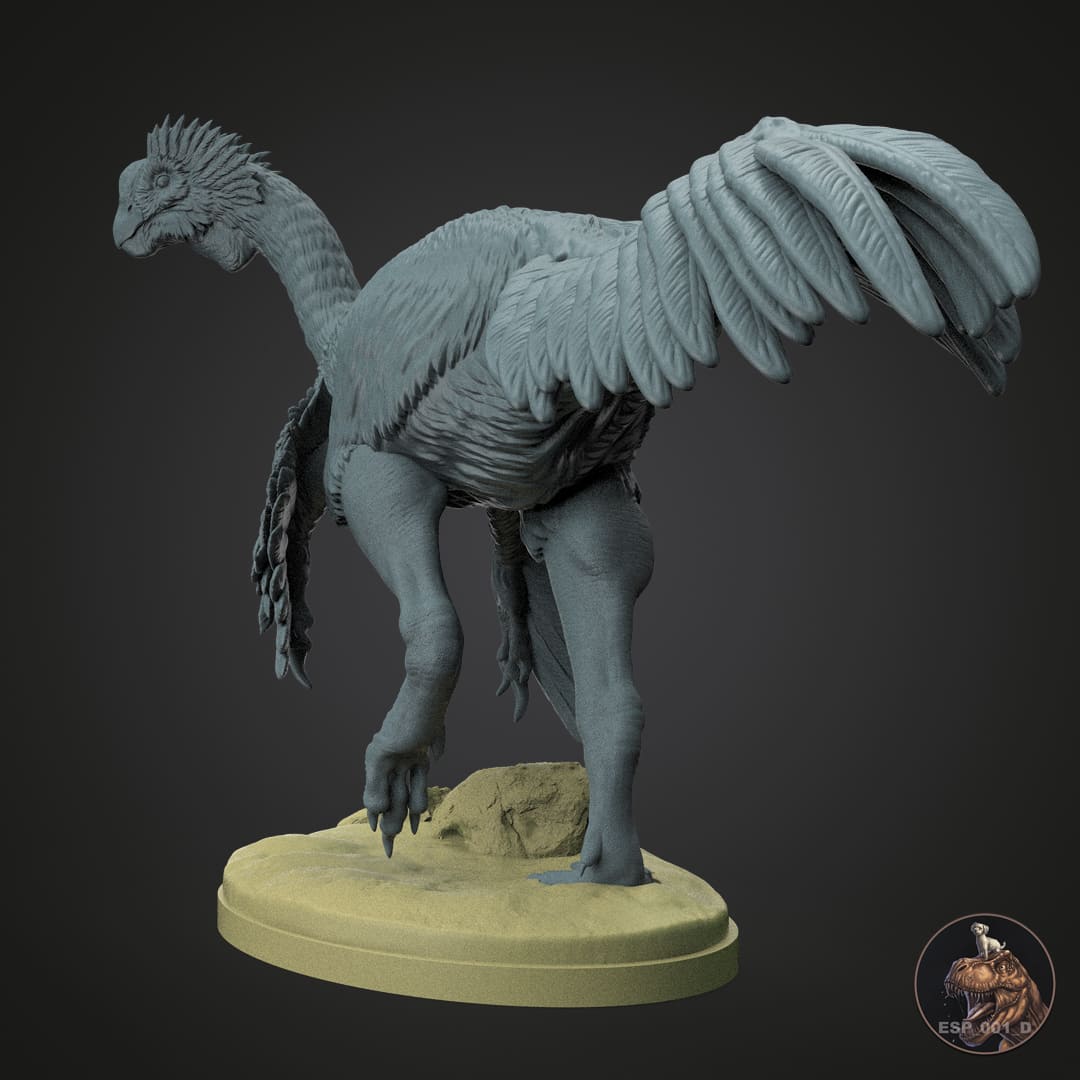Gigantoraptor erlianensis was a huge theropod dinosaur that lived during the Late Cretaceous, approximately 85 million years ago, in what is now Inner Mongolia, China. Its name means "Giant Robber of Erlian," a reference to its large size and the location where it was discovered, near the city of Erlian. This dinosaur belongs to the oviraptorosaur group, a lineage of generally small, avian-like theropods, making Gigantoraptor's gigantic size especially striking within its family.
With an estimated length of 8 meters and a height of about 5 meters, Gigantoraptor was the largest known oviraptorosaur to date, weighing approximately 1.4 tons. Despite its large size, it had a slender and light body, with long legs adapted for running, suggesting it was surprisingly agile for its size. Its skull was small and toothless, with a horny beak, which, combined with the shape of its jaw, indicates it may have had an omnivorous diet, feeding on both plants and small animals or eggs.
One of the most interesting features of Gigantoraptor is that, despite its size, it is believed to have been partially covered in feathers, like its smaller relatives. While no direct impressions of feathers have been found in the discovered fossils, evolutionary evidence suggests that oviraptorosaurs in general were feathered, and that Gigantoraptor would be no exception. This raises questions about how feathers were adapted or modified in large animals, perhaps with functions more related to display or thermal regulation than to flight.
The fossil skeleton found was remarkably well preserved, including parts of the skull, limbs, and pelvis. Its discovery in 2005 revolutionized our understanding of the diversity and evolution of oviraptorosaurs, demonstrating that these dinosaurs not only existed in small and medium-sized forms, but also developed into giant species. Gigantoraptor erlianensis inhabited a region that was once warm and semi-desert, sharing its environment with other herbivorous and carnivorous dinosaurs, making it a competitor and perhaps also an opportunistic predator within its ecosystem.


